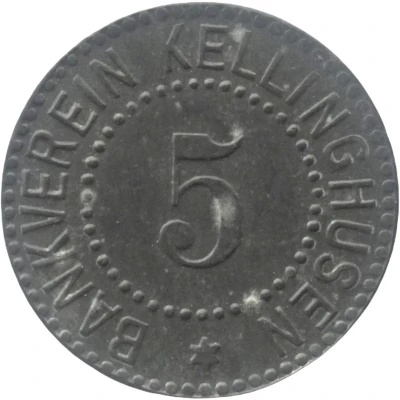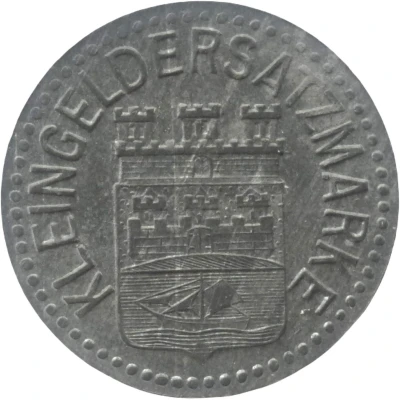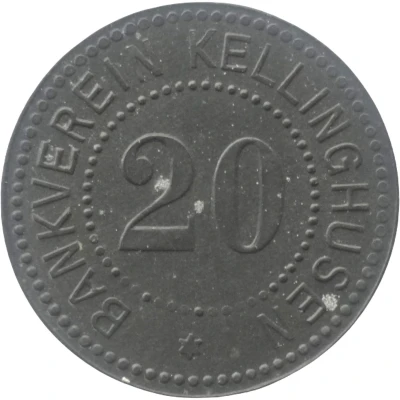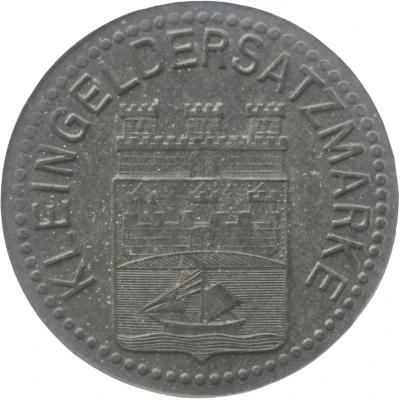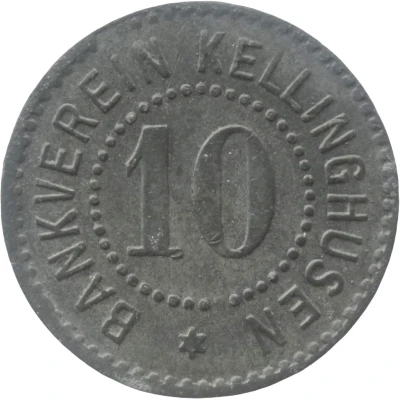
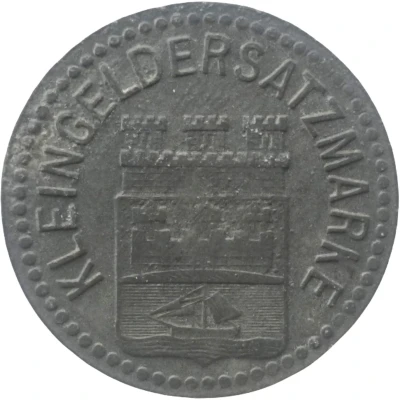

© Willem63 (CC BY-NC-SA)
10 Pfennigs - Kellinghusen ND
1917 year| Zinc | 1.7 g | 20.0 mm |
| Issuer | City of Kellinghusen (Prussian province of Schleswig-Holstein) |
|---|---|
| Emperor | William II (Wilhelm II) (1888-1918) |
| Type | Standard circulation coin |
| Year | 1917 |
| Value | 10 Pfennigs (10 Pfennige) (0.10) |
| Currency | Mark (1914-1924) |
| Composition | Zinc |
| Weight | 1.7 g |
| Diameter | 20.0 mm |
| Thickness | 1.0 mm |
| Shape | Round |
| Technique | Milled |
| Orientation | Medal alignment ↑↑ |
| Demonetized | Yes |
| Updated | 2024-10-04 |
| Numista | N#183186 |
|---|---|
| Rarity index | 87% |
Reverse
Pearl rim, legend surrounding coat of arms.
Script: Latin
Lettering: KLEINGELDERSATZMARKE
Edge
Plain
Comment
Issuing body: [Bankverein, Schleswig-Holstein].Interesting fact
The 10 Pfennigs coin from Kellinghusen (Prussian province of Schleswig-Holstein) made of Zinc weighing 1.7 g is interesting because it was produced during a time of economic turmoil in Germany. In 1917, the country was facing a severe shortage of coins due to the ongoing World War I, which led to the introduction of temporary substitute coins made of materials like zinc, aluminum, and even cardboard. The 10 Pfennigs coin from Kellinghusen is a rare example of one of these substitute coins, highlighting the resourcefulness and resilience of the people during a time of crisis.
Price
| Date | Mintage | VG | F | VF | XF | AU | UNC |
|---|---|---|---|---|---|---|---|
| ND (1917) | 21500 | - | - | - | - | - | - |
Values in the table are based on evaluations by sales realized on Internet platforms. They serve as an indication only for 10 Pfennigs - Kellinghusen ND (1917) coin.
